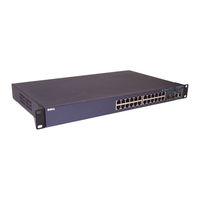Dell K0670 - PowerConnect 3448 Manuals
Manuals and User Guides for Dell K0670 - PowerConnect 3448. We have 1 Dell K0670 - PowerConnect 3448 manual available for free PDF download: User Manual
Advertisement
Advertisement
